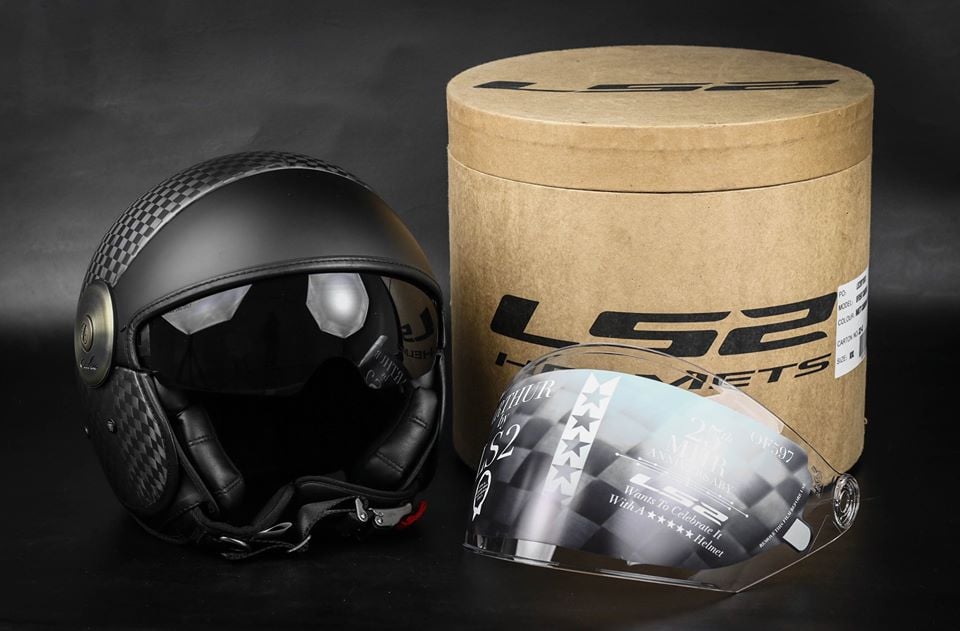In recent years, sustainability has become a priority in many industries, and the helmet manufacturing sector is no exception. As more riders and outdoor enthusiasts seek to reduce their environmental footprint, eco-friendly helmet materials have gained popularity. These materials not only promise better sustainability but also maintain or even enhance the performance and safety of the helmet. In this article, we will explore some of the most promising eco-friendly helmet materials that are shaping the future of helmet design.
1. Biodegradable Plastics
Best For: Bicycle helmets, motorbike helmets, and casual protective gear
One of the most significant innovations in helmet materials is the use of biodegradable plastics. Traditional plastic used in helmets can take hundreds of years to decompose, contributing significantly to landfill waste. In contrast, biodegradable plastics are designed to break down much more quickly when exposed to environmental conditions, reducing the environmental impact of discarded helmets.
Key Features:
- Sustainable Manufacturing: Many biodegradable plastics are derived from plant-based materials, such as corn or sugarcane. These materials reduce the need for petroleum-based plastics, making them a more sustainable choice.
- Decomposition Rate: Unlike traditional plastics, biodegradable plastics break down in a matter of years or even months, depending on the environment in which they are disposed of.
- Performance: These plastics can be designed to meet or exceed the safety standards of traditional helmet materials, ensuring that your helmet remains just as protective as conventional options.
Several brands are exploring biodegradable plastic alternatives for helmet shells and inner liners, helping to reduce plastic waste without compromising on protection.

2. Recycled Materials
Best For: Urban cycling helmets, eco-conscious outdoor helmets
Another eco-friendly material gaining traction in helmet design is the use of recycled materials. Helmets made from recycled materials, such as recycled polycarbonate or fiberglass, are helping to reduce the need for new raw materials and limit the environmental impact of helmet production.
Key Features:
- Reduced Carbon Footprint: By using recycled materials, manufacturers reduce the energy and resources required to produce new materials. This helps lower the overall carbon footprint of the helmet.
- Durability and Performance: Recycled plastics and fibers can be just as durable and protective as virgin materials, providing the same level of safety without contributing to waste.
- Circular Economy: Using recycled materials supports the concept of a circular economy, where products are reused, recycled, and repurposed, ultimately minimizing waste and environmental impact.
Many eco-conscious brands are incorporating recycled materials into both the outer shells and inner components of helmets, offering a more sustainable option without sacrificing quality.
3. Natural Fibers (Cork, Hemp, and Bamboo)
Best For: High-end, luxury, and artisan helmets
Natural fibers such as cork, hemp, and bamboo are increasingly being explored for use in eco-friendly helmets. These materials are renewable, biodegradable, and often provide superior performance characteristics, making them excellent alternatives to traditional synthetic materials.
Key Features:
- Cork: Cork is a natural material known for its lightweight, durable, and shock-absorbing properties. Cork-based helmet liners provide excellent protection against impacts while being environmentally friendly. Additionally, cork is a renewable resource, and its harvesting process has minimal environmental impact.
- Hemp: Hemp fibers are strong and lightweight, making them a great alternative to synthetic materials. Hemp helmets can provide excellent protection and durability, all while being biodegradable and sustainable.
- Bamboo: Bamboo is one of the fastest-growing plants on Earth, making it an ideal sustainable material. It is lightweight, strong, and naturally antimicrobial, which helps keep helmets fresher for longer.
While helmets made from natural fibers are still relatively rare, they offer a unique blend of sustainability, performance, and eco-friendliness. They are particularly popular among riders seeking artisanal or luxury helmets that align with eco-conscious values.
4. Expanded Polystyrene (EPS) Foam with Plant-Based Additives
Best For: Bicycle helmets, motorcycle helmets, and extreme sports helmets
Expanded Polystyrene (EPS) foam is one of the most commonly used materials in helmet construction, providing essential impact absorption. Traditional EPS foam is made from petroleum-based products, but manufacturers are now experimenting with plant-based additives to create more sustainable alternatives.
Key Features:
- Bio-Based EPS: Bio-based EPS uses plant-derived materials, such as cornstarch or sugarcane, as a substitute for petroleum-based products. This reduces the reliance on fossil fuels and makes the helmet more sustainable.
- Impact Resistance: Plant-based EPS foam offers the same level of protection as traditional EPS foam, absorbing impact forces to protect your head during a fall or collision.
- Environmental Benefits: Bio-based EPS is not only more sustainable but can also be biodegradable under certain conditions, reducing the environmental impact when helmets are discarded.
By incorporating plant-based additives into the EPS foam, helmet manufacturers are able to reduce the environmental footprint of their products without sacrificing safety or comfort.
5. Recycled Carbon Fiber
Best For: High-performance, sports, and racing helmets
Carbon fiber is renowned for its strength, durability, and lightweight properties, making it a popular choice for high-performance helmets. Traditionally, carbon fiber manufacturing is resource-intensive and results in significant waste. However, recycled carbon fiber offers a more sustainable alternative.
Key Features:
- Strength and Durability: Recycled carbon fiber retains the same strength and durability as new carbon fiber, providing excellent protection while keeping the helmet lightweight.
- Energy-Efficient Production: The process of recycling carbon fiber requires significantly less energy compared to producing new carbon fiber, reducing the overall environmental impact.
- Performance for Professionals: Recycled carbon fiber helmets are ideal for racing, motorsports, and high-performance biking, where safety and performance are crucial.
Recycling carbon fiber not only helps reduce waste but also makes high-performance helmets more accessible and eco-friendly.

6. Eco-Friendly Paints and Coatings
Best For: Any helmet, especially those looking to reduce environmental impact in finishing touches
Beyond the core materials used in the helmet’s structure, manufacturers are also turning to eco-friendly paints and coatings. Traditional paints can contain harmful chemicals and solvents, but eco-friendly alternatives are made with fewer toxic substances and are often water-based.
Key Features:
- Non-Toxic and Water-Based: Eco-friendly paints reduce the risk of harmful chemicals leaching into the environment and improve the safety of the manufacturing process.
- Reduced Environmental Impact: These paints often have a lower carbon footprint during production and application, making them a more sustainable option for finishing helmets.
- Durability and Style: Eco-friendly paints and coatings can still offer vibrant colors and long-lasting durability, providing the same aesthetic appeal as traditional coatings.
By using eco-friendly paints and coatings, helmet manufacturers can further reduce the environmental impact of their products, from production to disposal.
Conclusion
As demand for sustainable products continues to grow, the helmet industry is evolving to include more eco-friendly materials without compromising safety or performance. Whether it’s biodegradable plastics, recycled carbon fiber, or natural fibers like cork and bamboo, manufacturers are finding innovative ways to reduce their environmental footprint. For eco-conscious riders, these sustainable helmets offer peace of mind knowing that they are not only protecting themselves but also contributing to a healthier planet.
The future of helmet materials is bright, with advancements in sustainable technology making it easier than ever to make responsible choices. So, whether you’re riding a bike, dirt bike, or engaging in any outdoor adventure, consider investing in an eco-friendly helmet to ensure that your safety is paired with sustainability.


